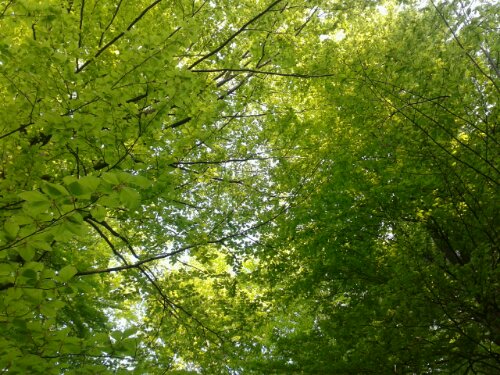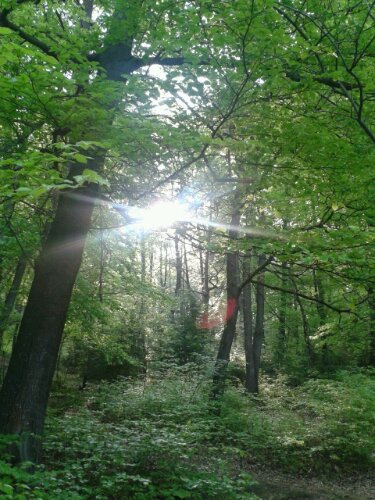


Each year the same-going to the forest I look after the very first beech leaves.For first beech leaves mean in a day or two all beeches will get their spring light green leaves and that means spring is reaching summer soon!Imagine summer holidays,deep shadow and a good book or e-book to read! Interesting enough the etymological origin of word BOOK lies in BEECH!
One explanation is runes were inscribed on beechwood tables, as in some slavic languages BUKVA (beech) is cognate with “letter”.In Slovene language, the word BUKVA (beech)is cognate with “book”(bukva).So in Slovene language we use the same word for tree and book(archaic).The explanation is very simple-in many monasteries across the land books were written and transcribed very early .Those old books had covers made of wood, beech , so in our language book remained BUKVA (beech) and the same root “*bōk-” stays in english BOOK and e-BOOK!
I’d prefer not to dig more deeply into etymology, for in Slovene language we also use the word beech(bukev) to describe someone not quiet bright….
The word comes from Old English “bōc” which (itself) comes from the Germanic root “*bōk-“, cognate to beech.[2] Similarly, in Slavic languages (for example, Russian, Bulgarian) “буква” (bukva—”letter”) is cognate with “beech”. In Russian and inSerbian, another Slavic language, the words “букварь” (bukvar’) and “буквар” (bukvar), respectively, refer specifically to a primary school textbook that helps young children master the techniques of reading and writing.It is thus conjectured that the earliest Indo-European writings may have been carved on beech wood.[3] Similarly, the Latin word codex, meaning a book in the modern sense (bound and with separate leaves), originally meant “block of wood”.
The first books used parchment or vellum (calf skin) for the pages. The book covers were made of wood and covered with leather. Because dried parchment tends to assume the form it had before processing, the books were fitted with clasps or straps. During the later Middle Ages, when public libraries appeared, up to 18th century, books were often chained to a bookshelf or a desk to prevent theft. These chained books are called libri catenati.


from:http://en.wikipedia.org/wiki/Book
| Fagus sylvatica European Beech |
|
|---|---|
 |
|
| European Beech foliage | |
| Scientific classification | |
| Kingdom: | Plantae |
| (unranked): | Angiosperms |
| (unranked): | Eudicots |
| (unranked): | Rosids |
| Order: | Fagales |
| Family: | Fagaceae |
| Genus: | Fagus |
| Species: | F. sylvatica |
| Binomial name | |
| Fagus sylvatica L.from:http://en.wikipedia.org/wiki/Fagus_sylvatica |
|


11 replies on “Fagus sylvatica-grandma of e-book”
I love posts like this!!
LikeLike
Thank you!
LikeLike
Reblogged this on Romancing the Bee and commented:
In case you were wondering where the word “book” comes from…
LikeLike
Thank you for reblogging my post-it means a lot to me, as you have a great blog!
LikeLike
You are very welcome! I loved the post!! 🙂
LikeLike
Very nice! I love etymology like this. Particularly because you tied it into a nature theme.
LikeLike
Thank you,it is so interesting to know more about words,isn’t it?
LikeLike
now I understand why the beech is my favourite tree – apart from the grace & beauty and the glorious green on the leaves 🙂 Thank you 🙂
LikeLike
Happy to know you like beech so much, it’s my favorite tree as-well!
LikeLike
This is fantastic, Tamara. I love books and trees, and now that I know how closely they’re connected, it’s even better!
LikeLike
Thank you, we do both love books and trees!
LikeLike